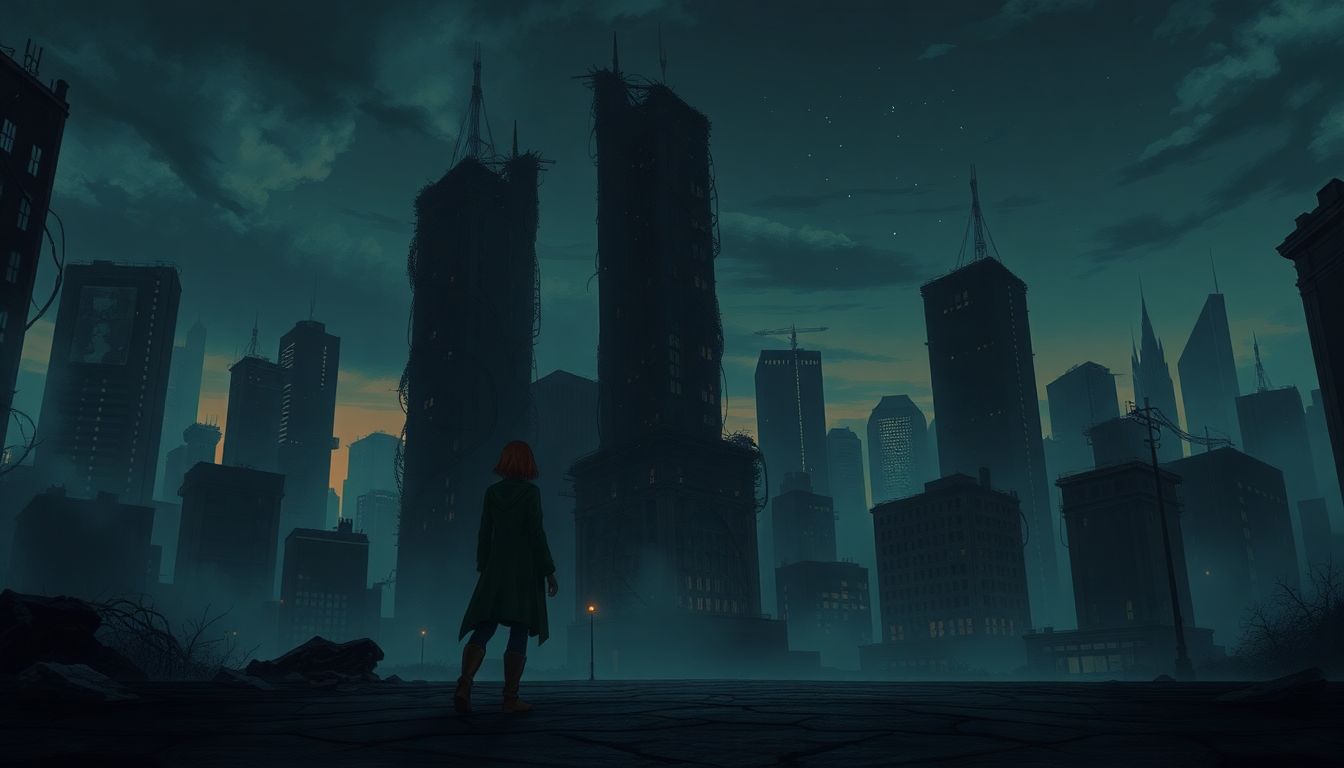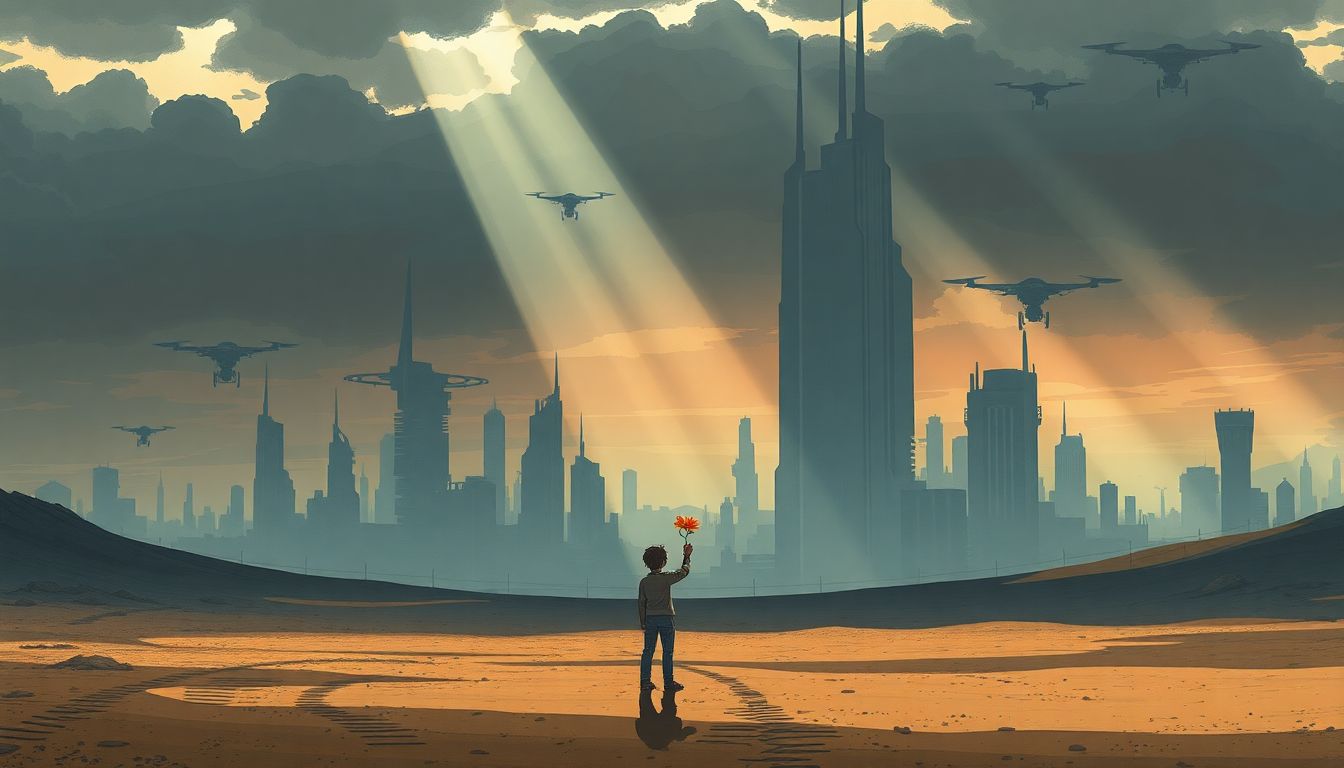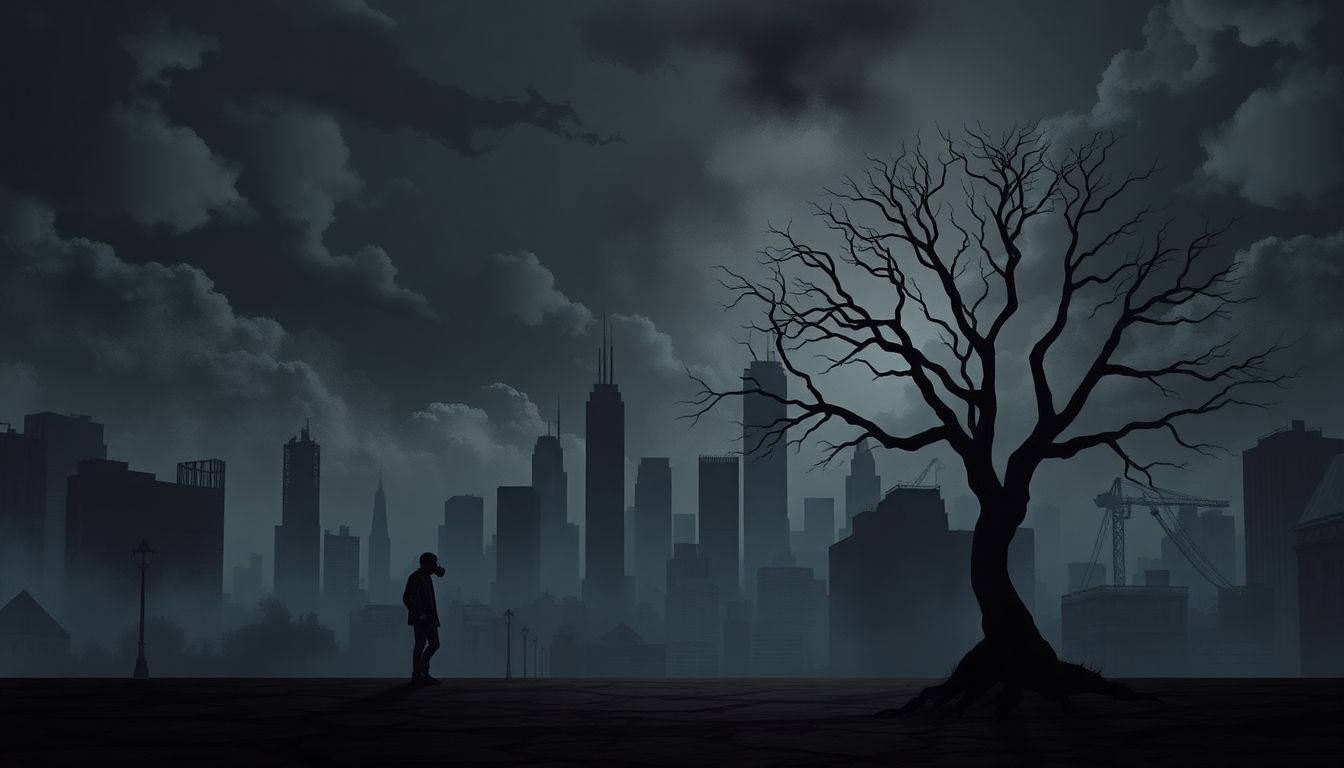Creating a believable dystopian world can be a daunting task. You might find yourself tangled in a web of what-ifs and how-tos, unsure of where to begin or how to make it all feel real. We get it—crafting a stark and engaging setting is no small feat!
But don’t fret! If you stick around, we’re about to dive into some killer prompts that will boost your inspiration and get your creative juices flowing. You’ll be well-equipped to build a hauntingly immersive dystopian universe that readers won’t soon forget.
From unique settings to compelling characters, we’re covering all the essentials. Get ready to explore societal structures, conflicts, and even a dash of hope amidst the darkness!
Key Takeaways
- Use effective prompts to guide your creativity in world-building and character development.
- Explore diverse settings, like cities reclaimed by nature or underground worlds, to create immersive environments.
- Develop relatable characters that drive the story and evoke emotion through motivation and flaws.
- Design societal structures that add depth and conflict, focusing on governance and power dynamics.
- Create tension through conflicts rooted in character desires and moral dilemmas.
- Incorporate technology themes to reveal its impact on freedom and societal norms.
- Highlight themes of hope and resistance, showing strength in adversity and inspiring readers.

Effective ChatGPT Prompts for Dystopian World-Building
Crafting a captivating dystopian world requires the right prompts to guide your creativity.
Here are some effective prompts to help you get started:
- “Create a detailed description of a city in a dystopian world where nature has reclaimed urban spaces.”
- “Outline a dystopian society that has banned all forms of art and communication. What are the consequences?”
- “Generate a list of societal rules in a future where technology has taken over essential jobs.”
- “Describe a world devastated by climate change. How do the remaining inhabitants survive?”
- “Imagine a government where surveillance is mandatory for all citizens. Detail its structure and daily life.”
Using these prompts, you can dig deep into your world-building process.
Crafting a Unique Dystopian Setting
Creating an immersive dystopian setting is key to drawing readers into your narrative.
Think about various elements like the environment, atmosphere, and cultural aspects that could impact the people living there.
Here are some prompts to help you develop a unique setting:
- “Describe a dystopian world where people live underground due to a toxic atmosphere. What does daily life look like?”
- “Imagine a city plagued by extreme weather where citizens must adapt to survive. What structures and systems do they create?”
- “Sketch out a rural area transformed into a dystopian landscape by pollution and corporate greed.”
Focus on creating rich sensory details that bring your settings to life.
Creating Memorable Characters in a Dystopian World
Characters are the heart of any story, and in dystopian settings, they play vital roles in driving the narrative.
Develop relatable and complex characters that evoke emotion in your readers.
To help with character creation, consider these prompts:
- “Create a character who rebels against a totalitarian regime. What drives them to defy authority?”
- “Describe a survivalist character who thrives in a post-apocalyptic world. What is their backstory?”
- “Develop a villain who genuinely believes they are saving humanity through oppressive means. What are their motives?”
Make sure your characters have clear motivations and flaws that make them relatable.
Designing Societal Structures in Dystopian Settings
Understanding the societal structures of your dystopian world can enhance its realism.
Consider aspects like governance, social hierarchy, and how power is distributed.
Here are some prompts to explore societal design:
- “Outline a community governed by strict social classes. How does this structure impact relationships?”
- “Describe a rebellion against an oppressive government. What are the factions involved, and how do they clash?”
- “Explore a society where technology dictates every aspect of life. What are the ethical implications?”
By rigorously defining your societal elements, you can create engaging conflict and depth in your story.
For more inspiration on writing prompts, check out our posts on creative writing prompts and prompts for novels.

Developing Conflict and Tension in Dystopian Stories
Conflict is the engine of your story, and in dystopian genres, it often revolves around survival, oppression, or rebellion.
Creating high stakes can keep readers on the edge of their seats.
Start by considering what your characters want and what stands in their way.
Here are some prompts to help you generate conflict:
- “Outline a scenario where a character discovers a hidden truth about their government. How do they respond?”
- “Imagine a community struggling with resource scarcity. What happens when two factions clash over access to clean water?”
- “Describe a situation where a character must choose between personal safety and helping a friend in danger. What influences their decision?”
Ensuring that each conflict is rooted in character motivation will make it more impactful.
Exploring Technology and Its Impact in Dystopian Worlds
Technology plays a crucial role in shaping the environment and power dynamics in dystopian settings.
Consider how advancements can create both conveniences and new challenges for society.
Think about issues like surveillance, artificial intelligence, or biotechnology, and how they affect personal freedoms.
Use these prompts to dig into tech-related themes:
- “Describe a futuristic city where surveillance drones monitor citizens’ every move. What are the ramifications of this constant oversight?”
- “Outline a society where AI makes all the decisions. How do humans cope with this loss of autonomy?”
- “Explore the consequences of genetic engineering in your world. What ethical dilemmas arise from ‘designer’ humans?”
By examining the duality of technology, you can create thought-provoking conflicts and dilemmas in your narrative.
Incorporating Themes of Hope and Resistance
Even in the darkest dystopian settings, themes of hope and resistance can provide emotional depth.
Characters can embody the struggle for freedom, offering glimmers of optimism amid chaos.
Consider crafting arcs that highlight individual courage or collective uprisings against oppression.
Here are some prompts to inspire your exploration of hope:
- “Create a backstory for a character who becomes a leader in a resistance movement. What ignites their passion for change?”
- “Imagine a small community that manages to preserve art and culture. How does this spark hope in an otherwise bleak world?”
- “Outline a story where a disabled character faces unique challenges but also brings hope to others through their resilience.”
Integrating these themes can resonate with readers who seek positivity even in dark narratives.

Using Environmental Factors in Dystopian World-Building
The environment often reflects the struggles of characters in a dystopian world, shaping their daily lives and the challenges they face.
Consider how natural elements like climate change, pollution, and wildlife influence society and individual behavior.
Here are some prompts to integrate environmental factors in your world-building:
- “Describe a city where the air is too toxic for humans to breathe without special gear. How do people adapt?”
- “Imagine a world where water is scarce and heavily controlled by the government. What conflicts arise from this situation?”
- “Outline a setting where the effects of a climate disaster have reshaped geography. How does this affect the inhabitants’ lifestyle?”
- “Create a scenario where nature is seen as the enemy, and people form alliances to survive against the dangers it presents.”
- “Describe how a land devastated by resource extraction leads its inhabitants to fight back against corporate greed.”
By weaving environmental issues into your narrative, you can make your worlds feel urgent and relevant.
Generating Plot Ideas in Dystopian Contexts
When it comes to dystopian fiction, the plot often revolves around conflict, survival, and moral dilemmas.
Generating fresh and compelling plot ideas can help maintain reader interest.
Here are some prompts to kick-start your plot generation:
- “Create a story where a group of rebels hacks into a government database. What secrets do they uncover?”
- “Imagine a character who has been genetically modified for a specific purpose. What happens when they develop their own desires?”
- “Outline a plot where an unlikely friendship forms between a loyal enforcer of the regime and a wanted dissident.”
- “Describe a world where everyone is implanted with a chip to monitor thoughts. What occurs when someone learns to block it?”
- “Develop a narrative where a community discovers an uncharted area free from tyranny. How do they decide to proceed?”
These prompts can serve as a springboard, leading to unique stories that captivate your audience.
Writing Dialogue that Fits a Dystopian Narrative
Dialogue in dystopian literature should reflect the tension and unique societal norms of the setting.
Utilizing authentic speech patterns will allow your characters to feel realistic and relatable.
Here are some prompts to help you craft compelling dialogue:
- “Write a dialogue exchange between a government official and a citizen caught breaking a law. What are their contrasting perspectives?”
- “Imagine two characters discussing their forbidden love in a society that punishes such relationships. How do they express their feelings?”
- “Create a conversation where a rebel and a government supporter discuss their beliefs. What are the key arguments on both sides?”
- “Outline a scene where a character tries to convince another to join a resistance group. What persuasive techniques do they use?”
- “Develop a dialogue that reveals a character’s backstory through natural conversation with a friend reflecting on their past.”
Integrating dialogue that feels true to the characters’ experiences and feelings will elevate your dystopian narrative.
Finding Inspiration for Dystopian World-Building
Inspiration can come from many places, and finding it for your dystopian world can be an exciting journey.
Consider pulling ideas from current events, classic literature, or even personal experiences.
Here are some prompts to spark your creativity:
- “List current events that could be escalated into a dystopian scenario. How might society evolve from that point?”
- “Explore a classic dystopian book or film. What themes resonate, and how can you put a fresh twist on them?”
- “Think about your own fears or concerns about the future. How could these inform your world-building?”
- “Explore art styles or music genres that evoke a sense of dystopia. How can you incorporate these elements into your narrative?”
- “Discuss a personal experience that felt particularly oppressive or isolating. How can this be translated into your character’s journey?”
Drawing from a variety of sources allows for richer, more nuanced world-building that resonates with readers.
FAQs
When crafting a unique dystopian setting, focus on the socio-political landscape, environmental conditions, technology’s role, and how these elements affect daily life. Incorporating distinct cultural practices can also enhance originality.
To create memorable characters, give them clear motivations and flaws that resonate with readers. Explore their backstories in relation to the dystopian world, and ensure their choices drive the plot, reflecting the setting’s harsh realities.
Incorporate themes of unity, sacrifice, and resilience. Show characters building alliances, fighting for justice, and finding strength in their struggles. Highlight small victories that inspire hope amidst oppression.
To generate plot ideas, think about societal conflicts caused by technology, resource scarcity, or authoritarian regimes. Consider how characters respond to oppression and what pushes them to rebel or adapt.
